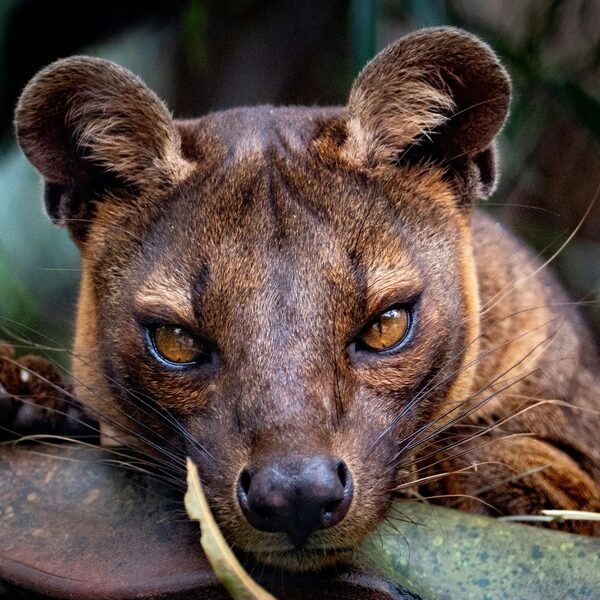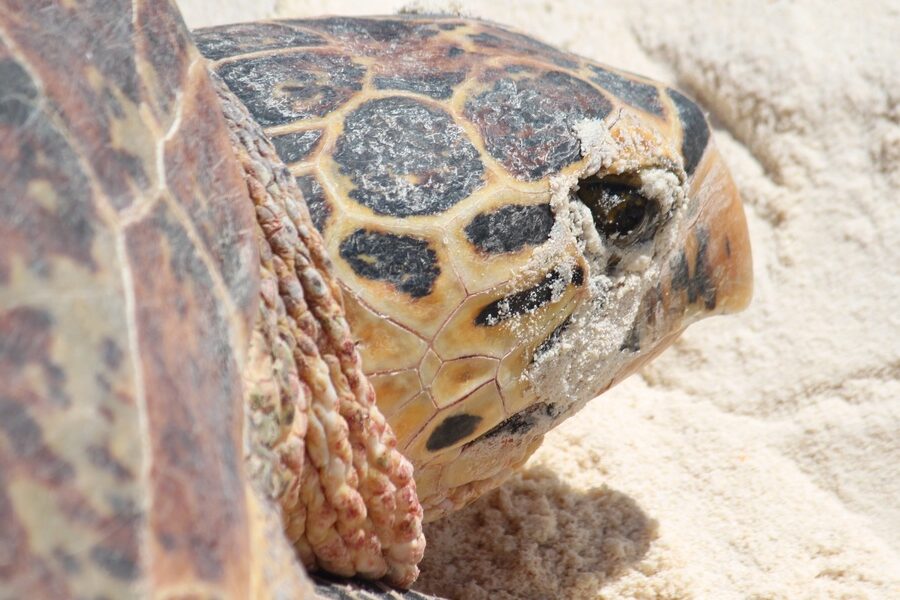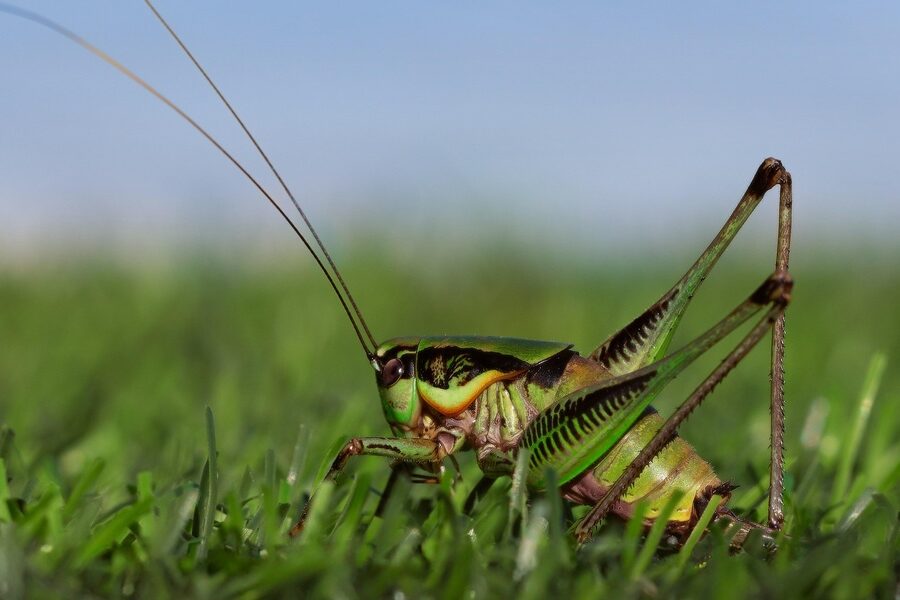Montenegro’s rugged coastline, karst mountains and mixed forests support a surprising variety of wildlife across a small country. From shoals in the Adriatic to dense inland woodlands, the habitats change quickly, so you can spot sea life one day and forest mammals the next.
There are 39 Montenegro’s native animals, ranging from Adriatic anchovy to Wild boar; for each entry the data lists Scientific name,Size (cm / kg),Habitat & where to see — you’ll find below.
Where are the best places in Montenegro to look for these species?
Coastal species like the Adriatic anchovy are easiest to see from boats or rocky shores around the Bay of Kotor and Budva, while forest and mountain species such as the Wild boar appear in Durmitor, Biogradska Gora and Morača valley; each list entry notes habitat and suggested viewing locations to help plan trips.
Can I rely on the Scientific name,Size (cm / kg),Habitat & where to see data for identification?
Yes — the columns give a quick reference: the scientific name avoids confusion between common names, size offers a practical identification cue, and the habitat/where-to-see notes point to typical areas and seasons, but for precise ID bring a field guide or use a regional expert for confirmation.
Montenegro’s Native Animals
| Name | Scientific name | Size (cm / kg) | Habitat & where to see |
|---|---|---|---|
| Brown bear | Ursus arctos | 180 cm / 120 kg | Forests, high mountains; Durmitor, Biogradska Gora, Prokletije |
| Grey wolf | Canis lupus | 120 cm / 35 kg | Forests, mountains; northern and central Montenegro, Tara Canyon |
| Golden jackal | Canis aureus | 65 cm / 9 kg | Open scrub, farmland edges; lowlands and coast |
| Red fox | Vulpes vulpes | 60 cm / 6 kg | Woodlands, fields, near towns; throughout Montenegro |
| Wild boar | Sus scrofa | 120 cm / 80 kg | Wooded valleys, wetlands; Skadar Lake, lowland forests |
| Roe deer | Capreolus capreolus | 100 cm / 25 kg | Woodland edges, mixed forests; northern and central regions |
| Chamois | Rupicapra rupicapra | 100 cm / 35 kg | Alpine cliffs; Durmitor, Prokletije, Bjelasica |
| European otter | Lutra lutra | 90 cm / 10 kg | Rivers, lakes, wetlands; Tara, Morača, Skadar Lake |
| European wildcat | Felis silvestris | 70 cm / 5 kg | Mixed forests, higher woodlands; remote areas across Montenegro |
| European hare | Lepus europaeus | 60 cm / 3.5 kg | Open fields, meadows; lowlands and hills |
| Golden eagle | Aquila chrysaetos | 75 cm / 4 kg | Mountain ridges, cliffs; Durmitor, Prokletije, Komovi |
| Griffon vulture | Gyps fulvus | 95 cm / 9 kg | Cliffs, gorges; Tara Canyon, coastal cliffs |
| Peregrine falcon | Falco peregrinus | 40 cm / 1 kg | Coastal cliffs, river gorges; urban cliffs and mountains |
| Common buzzard | Buteo buteo | 55 cm / 1.1 kg | Woodlands, open countryside; widespread |
| Rock partridge | Alectoris graeca | 34 cm / 0.5 kg | Rocky alpine slopes; Durmitor, Prokletije |
| Little egret | Egretta garzetta | 65 cm / 0.6 kg | Wetlands, coast; Skadar Lake, lagoons, estuaries |
| Grey heron | Ardea cinerea | 100 cm / 2.5 kg | Rivers, lakes, coast; Skadar Lake, Moraca delta |
| Common kingfisher | Alcedo atthis | 17 cm / 0.04 kg | Clear streams, rivers, lakes; Tara, Skadar Lake shores |
| White stork | Ciconia ciconia | 100 cm / 3 kg | Wet meadows, villages; Skadar Lake region, coastal lowlands |
| Hermann’s tortoise | Testudo hermanni | 20 cm / 2 kg | Dry scrub, oak forests; coastal and lowland Montenegro |
| Balkan pond turtle | Mauremys rivulata | 25 cm / 2.5 kg | Slow rivers, ponds; Skadar Lake, karst streams |
| European green toad | Bufotes viridis | 10 cm / 0.05 kg | Temporary pools, lowland wetlands; coastal plains, Skadar |
| Fire salamander | Salamandra salamandra | 20 cm / 0.05 kg | Moist deciduous forests, springs; mountain woods |
| Common wall lizard | Podarcis muralis | 20 cm / 0.02 kg | Rock walls, urban ruins, cliffs; towns and mountains |
| Marsh frog | Pelophylax ridibundus | 10 cm / 0.05 kg | Lakes, slow rivers, wetlands; Skadar Lake, river floodplains |
| Brown trout | Salmo trutta | 30 cm / 1 kg | Cold mountain streams, rivers; Tara, Piva, Morača rivers |
| Marble trout | Salmo marmoratus | 60 cm / 5 kg | Fast mountain rivers; Tara and Morača basins |
| European eel | Anguilla anguilla | 60 cm / 1 kg | Rivers, estuaries, coast; migrates via Adriatic Sea |
| Spined loach | Cobitis elongatoides | 12 cm / 0.02 kg | Slow rivers, streams; lowland and foothill waters |
| Adriatic anchovy | Engraulis encrasicolus | 12 cm / 0.02 kg | Coastal waters, bays; Montenegrin Adriatic Sea |
| European hake | Merluccius merluccius | 80 cm / 5 kg | Offshore continental shelf; Adriatic Sea |
| Gilthead seabream | Sparus aurata | 40 cm / 2 kg | Seagrass beds, coastal lagoons; bays and harbors |
| Common bottlenose dolphin | Tursiops truncatus | 250 cm / 150 kg | Offshore and coastal waters; southern Adriatic |
| Mediterranean moray | Muraena helena | 150 cm / 5 kg | Rocky reefs, caves; coastal Adriatic waters |
| Loggerhead sea turtle | Caretta caretta | 90 cm / 100 kg | Coastal waters, sandy beaches; southern Adriatic coast |
| Common octopus | Octopus vulgaris | 100 cm / 8 kg | Rocky coast, seafloor; shallow Adriatic reefs |
| Apollo butterfly | Parnassius apollo | 8 cm / 0.01 kg | Alpine meadows, limestone slopes; Durmitor, Prokletije |
| Stag beetle | Lucanus cervus | 7 cm / 0.03 kg | Deciduous woodlands, old orchards; lowland forests |
| Praying mantis | Mantis religiosa | 7 cm / 0.01 kg | Grasslands, shrubland, gardens; lowlands and hills |
Images and Descriptions
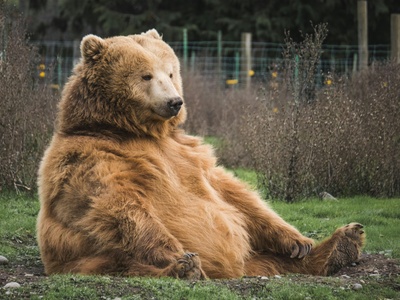
Brown bear
Large omnivore of Montenegro’s forests and mountains. Shy but occasionally seen at dawn/dusk in remote parks. Locally monitored; populations stable but sensitive to habitat loss and human conflict.
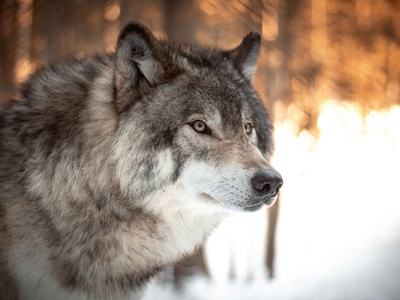
Grey wolf
Social predator often in packs, hunting deer and boar. Best spotted indirectly by tracks or at dawn/dusk in remote canyons and forests. Protected but occasionally persecuted.

Golden jackal
Adaptable medium-sized canid expanding in the Balkans. Often active at night, seen near villages and wetlands. Opportunistic diet, common and increasing in many regions.
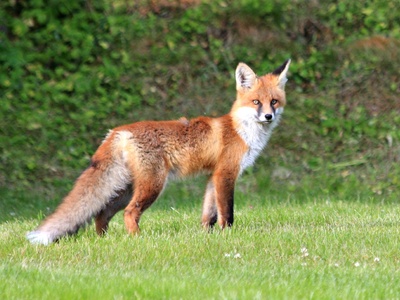
Red fox
Widespread, opportunistic predator and scavenger. Visible at dawn/dusk and sometimes in suburbs. Clever and adaptable, often heard as kits in spring.

Wild boar
Stout omnivore rooting for food at night. Can be common in forests and near wetlands; encounters most often at dusk or by tracks and overturned soil.
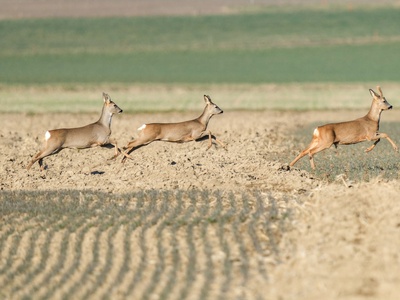
Roe deer
Small deer frequenting forest clearings and fields. Often seen at dawn/dusk in lowland and montane woodlands; hunted species with local conservation measures.

Chamois
Agile mountain goat-antelope of rocky slopes. Best seen in summer on high alpine pastures and cliffs. Locally prized for wildlife viewing and alpine scenery.
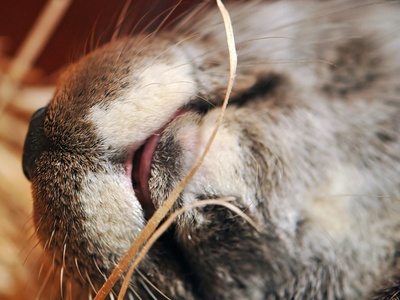
European otter
Semi-aquatic mammal feeding on fish and crustaceans. Secretive but visible at dawn/dusk or by spraints on riverbanks. Indicator of healthy waterways.
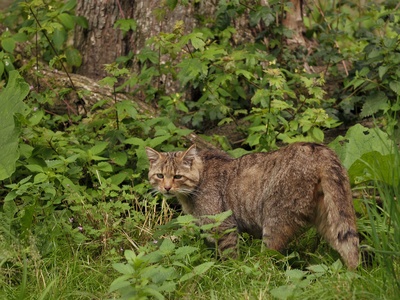
European wildcat
Solitary, elusive forest cat resembling a large tabby. Mostly nocturnal; signs include tracks and scats. Threats include hybridization with feral cats.
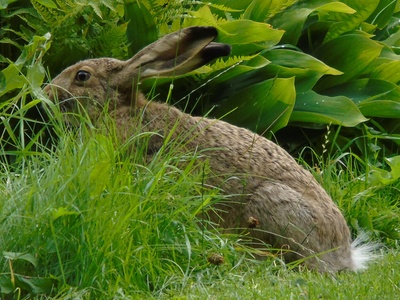
European hare
Fast-running herbivore common in farmland and meadows. Active at night and at dusk; often seen in open country and field edges.
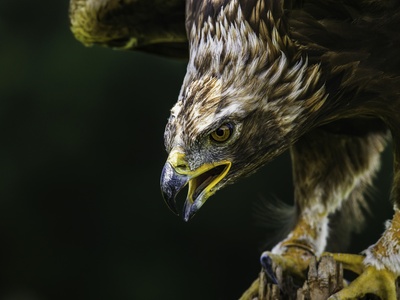
Golden eagle
Powerful raptor soaring over high mountains and cliffs. Look for adults on thermals or perched on crags; nests on remote cliffs. Locally protected predator.

Griffon vulture
Large colonial scavenger that nests on high cliffs. Soars in thermals over canyons; often seen at vulture feeding sites and protected areas.
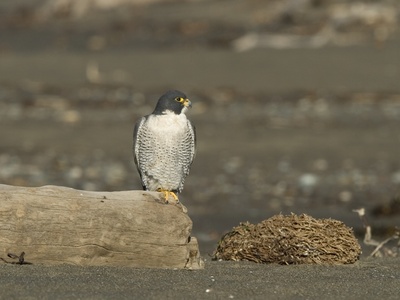
Peregrine falcon
Fast aerial predator known for high-speed dives. Nest on cliffs and urban ledges; best seen at dawn and dusk hunting birds.

Common buzzard
Versatile raptor often seen perched on posts or circling in thermals. Common across Montenegro in varied habitats, active by day.
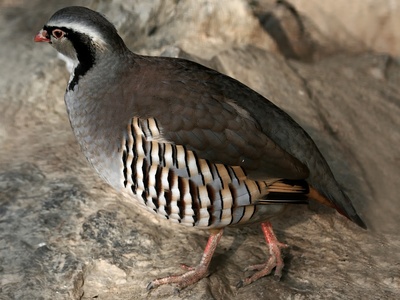
Rock partridge
Stocky ground bird of rocky mountain slopes. Often heard calling at dawn; best seen on alpine screes and stone terraces.

Little egret
Slender white heron feeding in shallow waters. Common in coastal marshes and lake edges; active by day hunting fish and amphibians.
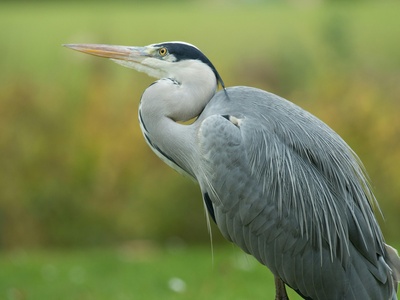
Grey heron
Tall, patient fish-eater frequenting shorelines and reedbeds. Visible year-round in wetland habitats and riverbanks.
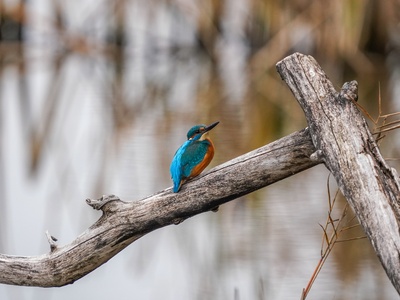
Common kingfisher
Vivid blue-and-orange small bird hunting fish from perches. Best seen in calm waters during daylight; quick and territorial.
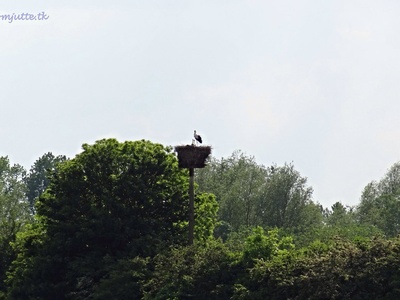
White stork
Long-legged migratory bird nesting on poles and roofs near wetlands. Returns in spring; often seen feeding in shallow marshes.
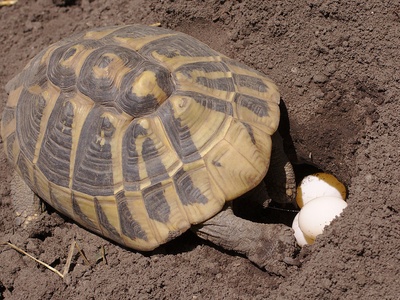
Hermann’s tortoise
Small land tortoise of warm scrub and rocky grassland. Diurnal, often seen basking in spring; threatened by habitat loss and collection.

Balkan pond turtle
Freshwater turtle common in Mediterranean wetlands and karst streams. Sun-basks on logs and banks; wary but visible in summer.

European green toad
Colorful, warty toad breeding in seasonal pools and ponds. Most active in spring and after heavy rains.
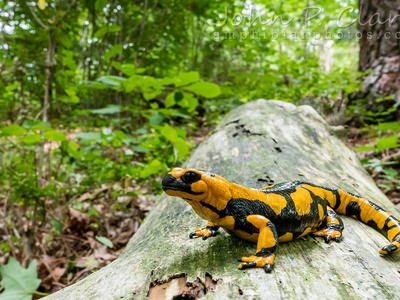
Fire salamander
Black-and-yellow nocturnal amphibian living in cool, humid forests. Seeks streams for larvae; often hidden under logs and stones.
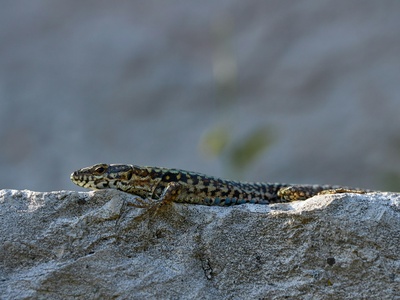
Common wall lizard
Small, agile sun-loving lizard frequently seen on rocks, walls and ruins. Active in warm weather and common near human settlements.
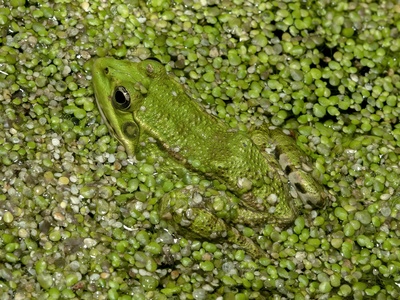
Marsh frog
Large green frog of wetlands and reedbeds. Calls loudly in spring; common in lowland aquatic habitats.
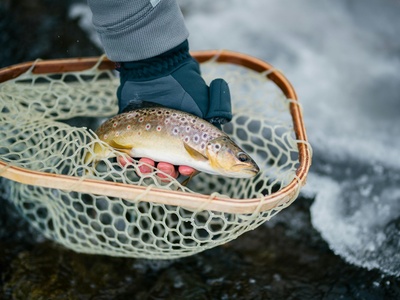
Brown trout
Native trout of clear, cold waters. Sought by anglers; best observed in mountain streams and river pools. Locally vulnerable to habitat changes.
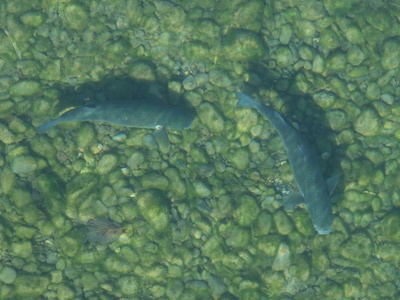
Marble trout
Distinctive mottled trout endemic to Adriatic rivers. Prefers clean, cold torrents; threatened and protected in some rivers.
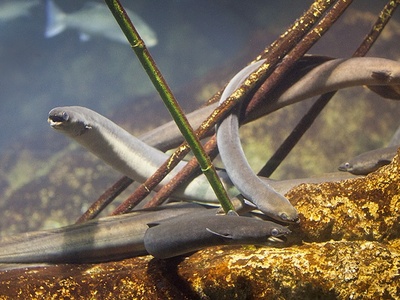
European eel
Catadromous species migrating to the Sargasso Sea to breed. Present in rivers and lakes; numbers declined dramatically due to multiple threats.
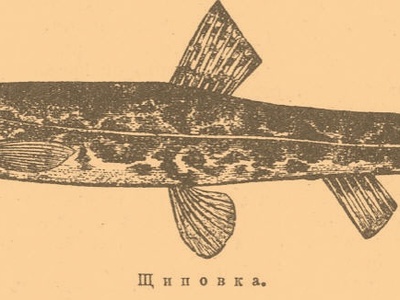
Spined loach
Small, bottom-dwelling freshwater fish living in sandy or muddy substrates. Often overlooked but widespread in suitable waters.
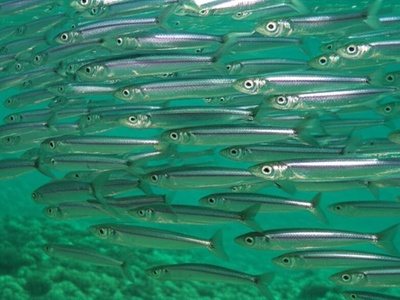
Adriatic anchovy
Small schooling forage fish central to coastal food webs and fisheries. Seen in large shoals near shore and estuaries; fished commercially.
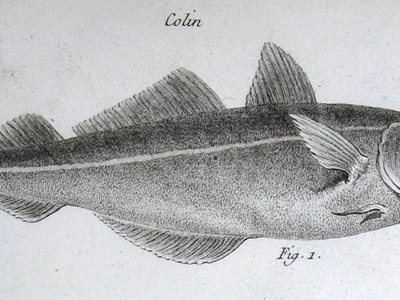
European hake
Predatory demersal fish of deeper coastal waters. Important for local fisheries; usually caught by trawlers and nets.

Gilthead seabream
Popular coastal fish commonly found near seagrass and rocky bottoms. Frequently seen by anglers and in restaurants.
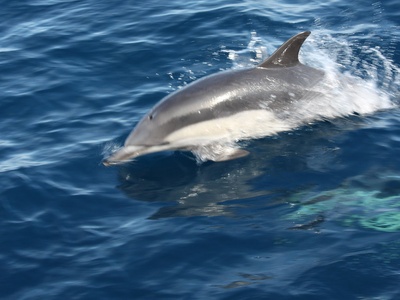
Common bottlenose dolphin
Familiar, sociable dolphin occasionally seen near shore and around islands. Best observed on boat trips; hunts fish in pods.

Mediterranean moray
Nocturnal predatory eel living among rocks and caves. Rarely seen during day; look for it while diving on rocky reefs.
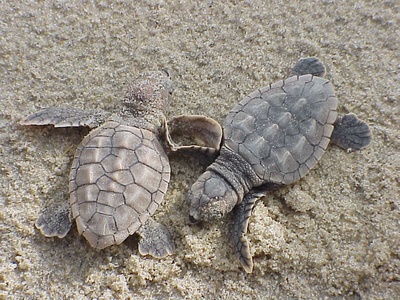
Loggerhead sea turtle
Large marine turtle that forages in coastal waters and nests sporadically on sandy beaches. Protected and monitored when nesting occurs.
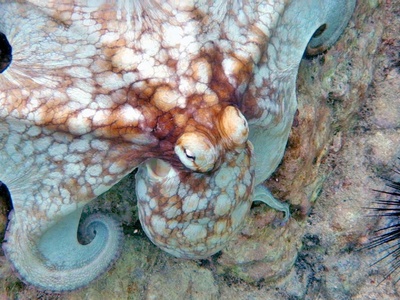
Common octopus
Intelligent, nocturnal cephalopod living in dens on the seafloor. Active at night hunting crustaceans; common in coastal dives and fishing catch.
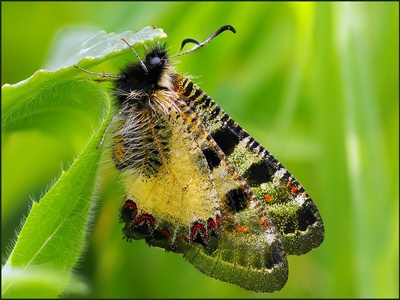
Apollo butterfly
Striking mountain butterfly on flower-rich alpine grasslands. Seen in summer at high elevations; sensitive to habitat change.
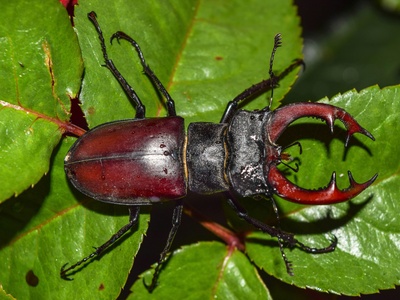
Stag beetle
Impressive large beetle whose males have standout mandibles. Attracted to old wood and tree cavities; active in summer evenings.
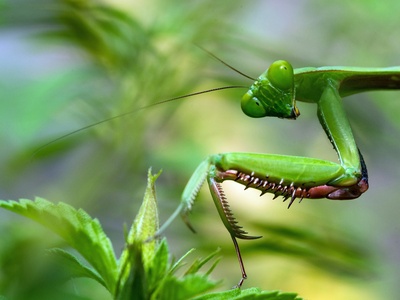
Praying mantis
Ambush predator found in warm grassy areas and gardens. Often seen during summer on plants, hunting insects.


